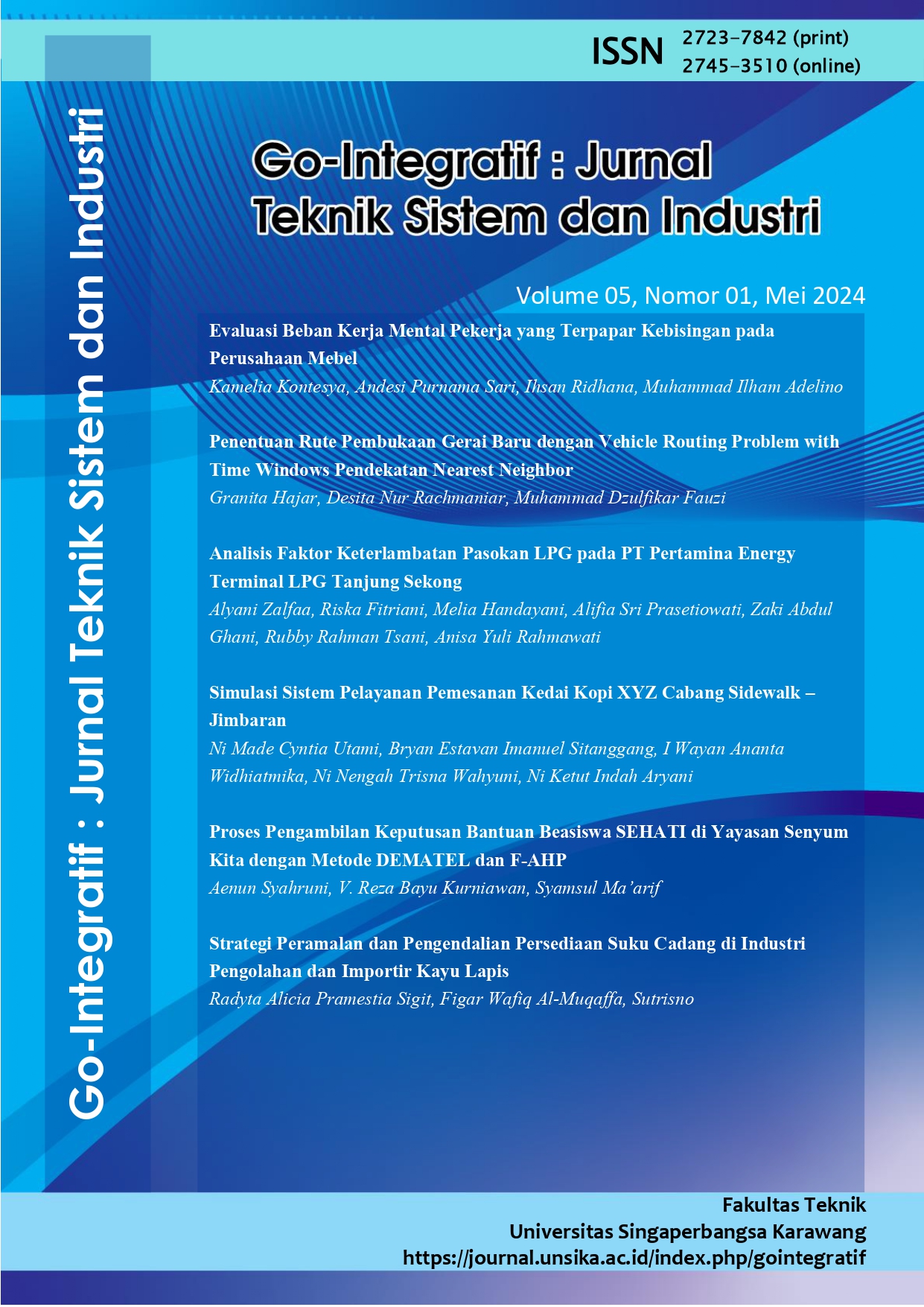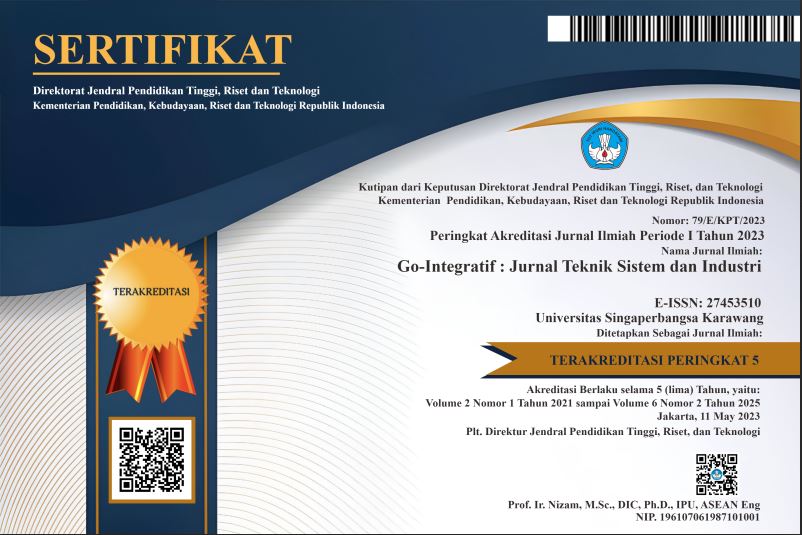Strategi Peramalan dan Pengendalian Persediaan Suku Cadang di Industri Pengolahan dan Importir Kayu Lapis
DOI:
https://doi.org/10.35261/gijtsi.v5i01.12005Abstract
PT. XYZ is a plywood product manufacturer and exporter. Currently, spare parts inventory management is still done intuitively based on data about previous periods' spare parts needs. As a result, when spare components are required, there is sometimes a shortage. Spare parts inventory management is a challenging subject because it necessitates a quick response to limit damage time and the risk of production machine part obsolescence. Furthermore, spare parts have a distinct demand pattern in which demand does not arise at the same time every time and has a large variance. As a result, it can be classified as intermittent or lumpy demand. So, in this study, spare parts inventory control will be explored, beginning with the classification of spare parts using the ADI-CV approach. The simple moving average approach, single exponential smoothing, Croston's method, Syntetos-Boylan approximation (SBA), and Montecarlo simulation are used to estimate the need for spare components. The performance of forecasting systems is compared by taking five metrics of accuracy into account: A-MAPE, ME, and MSE. The periodic review approach will be used to calculate a safety stock, reorder point, and optimal order quantity based on the results of the best forecast of demands.
Downloads
References
A. Bacchetti and N. Saccani, Spare parts classification and demand forecasting for stock control: Investigating the gap between research and practice, vol. 40. 2012.
A. A. Syntetos, J. E. Boylan, and J. D. Croston, “On the categorization of demand patterns,” J. Oper. Res. Soc., vol. 56, no. 5, pp. 495–503, May 2005, doi: 10.1057/palgrave.jors.2601841.
T. R. Willemain, C. N. Smart, and H. F. Schwarz, “A new approach to forecasting intermittent demand for service parts inventories,” Int. J. Forecast., vol. 20, no. 3, pp. 375–387, Jul. 2004, doi: 10.1016/S0169-2070(03)00013-X.
M. Kalchschmidt, G. Zotteri, and R. Verganti, Inventory management in a multi-echelon spare parts supply chain, vol. 82. 2003.
A. Ghobbar and C. H. Friend, Evaluation of forecasting methods for intermittent parts demand in the field of aviation: A predictive model, vol. 30. 2003.
E. Bartezzaghi, R. Verganti, and G. Zotteri, A simulation framework for forecasting uncertain lumpy demand - Issues and analysis, vol. 59. 1999.
S. Makridakis, S. C. Wheelwright, and R. Hyndman, “Forecasting: Methods and Applications,” in The Journal of the Operational Research Society, vol. 35, 1984.
Gumawan and Marwan, Anggaran Perusahaan. Yogyakarta: BPFE, 2004.
L. Sumayang, Dasar-Dasar Manajemen Produksi dan Operasi. Jakarta: Salemba Empat, 2003.
A. Nasution and Prasetyawan, Perencanaan dan Pengendalian Produksi. Yogyakarta: Graha Ilmu, 2008.
J. L. Whitten, L. D. Bentley, and K. Dittman, Systems Analysis and Design Methods. 1997.
V. Gaspersz, Production Planning and Inventory Control. Jakarta: Gramedia Pustaka Utama, 2005.
P. Subagyo, Forecasting Konsep dan Aplikasi. Jakarta: BPFE, 2002.
L. Arsyad, Peramalan Bisnis. Yogyakarta: BPFE, 2001.
Render and Hizer, Prinsip-Prinsip Manajemen Operasi. Jakarta: Salemba Empat, 2005.
E. Levén and A. Segerstedt, “Inventory control with a modified Croston procedure and Erlang distribution,” Int. J. Prod. Econ., vol. 90, no. 3, pp. 361–367, Aug. 2004, doi: 10.1016/S0925-5273(03)00053-7.
R. J. Tersine, Principles of Inventory and Materials Management. Prentice Hall, 1994.
Downloads
Published
How to Cite
Issue
Section
License
Copyright (c) 2024 Ikhlasul Amallynda, Erwin Wicaksono

This work is licensed under a Creative Commons Attribution-NonCommercial-ShareAlike 4.0 International License.







